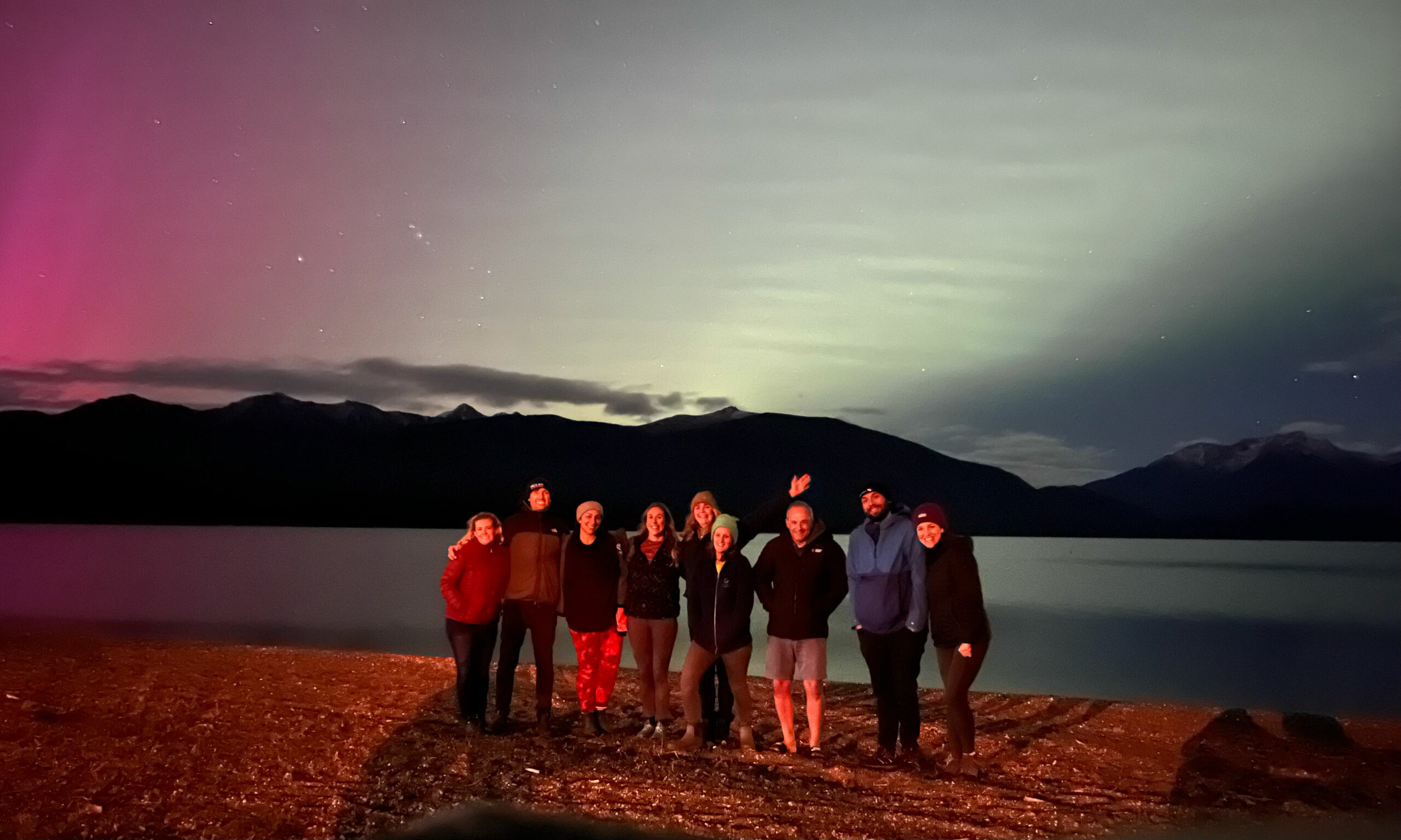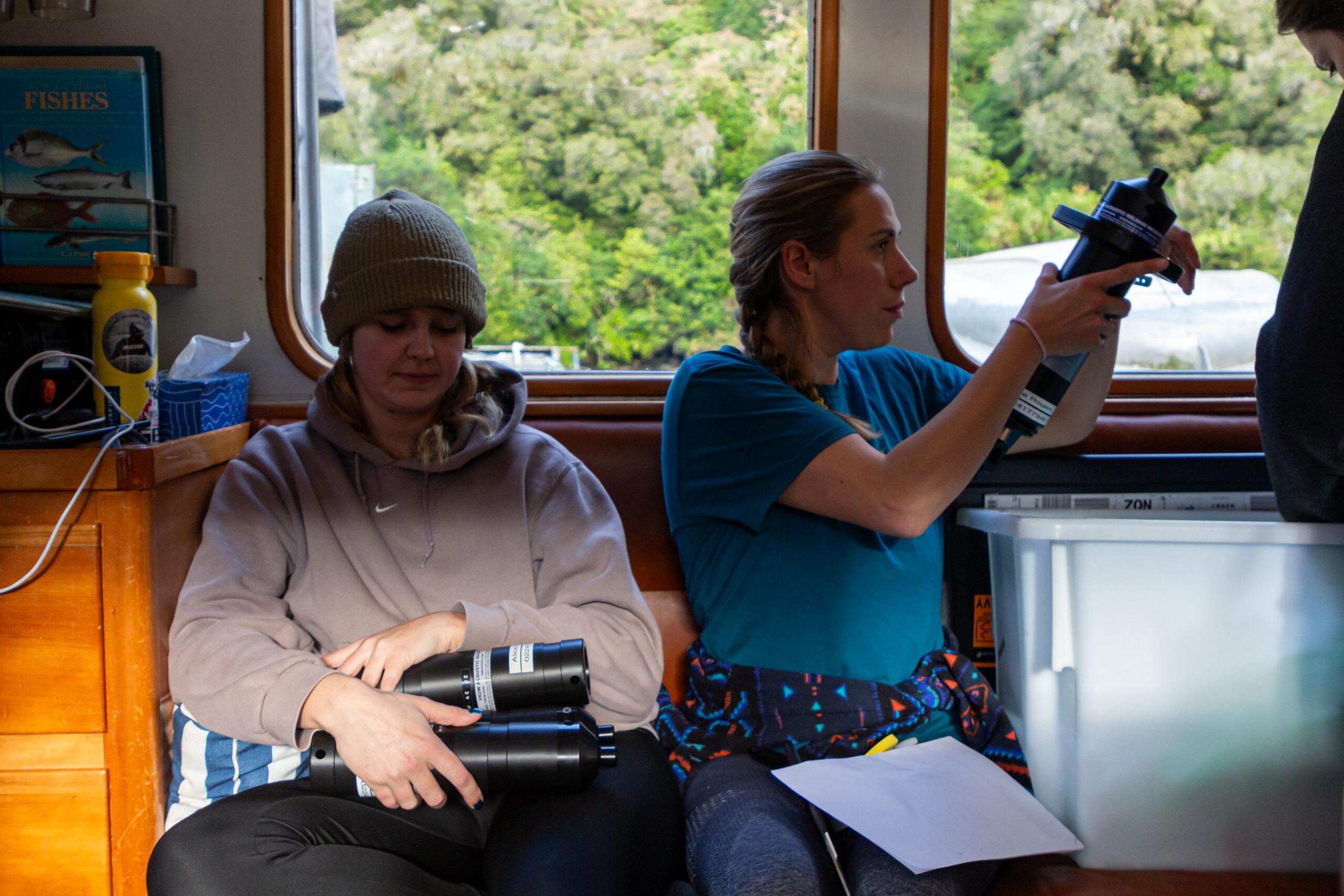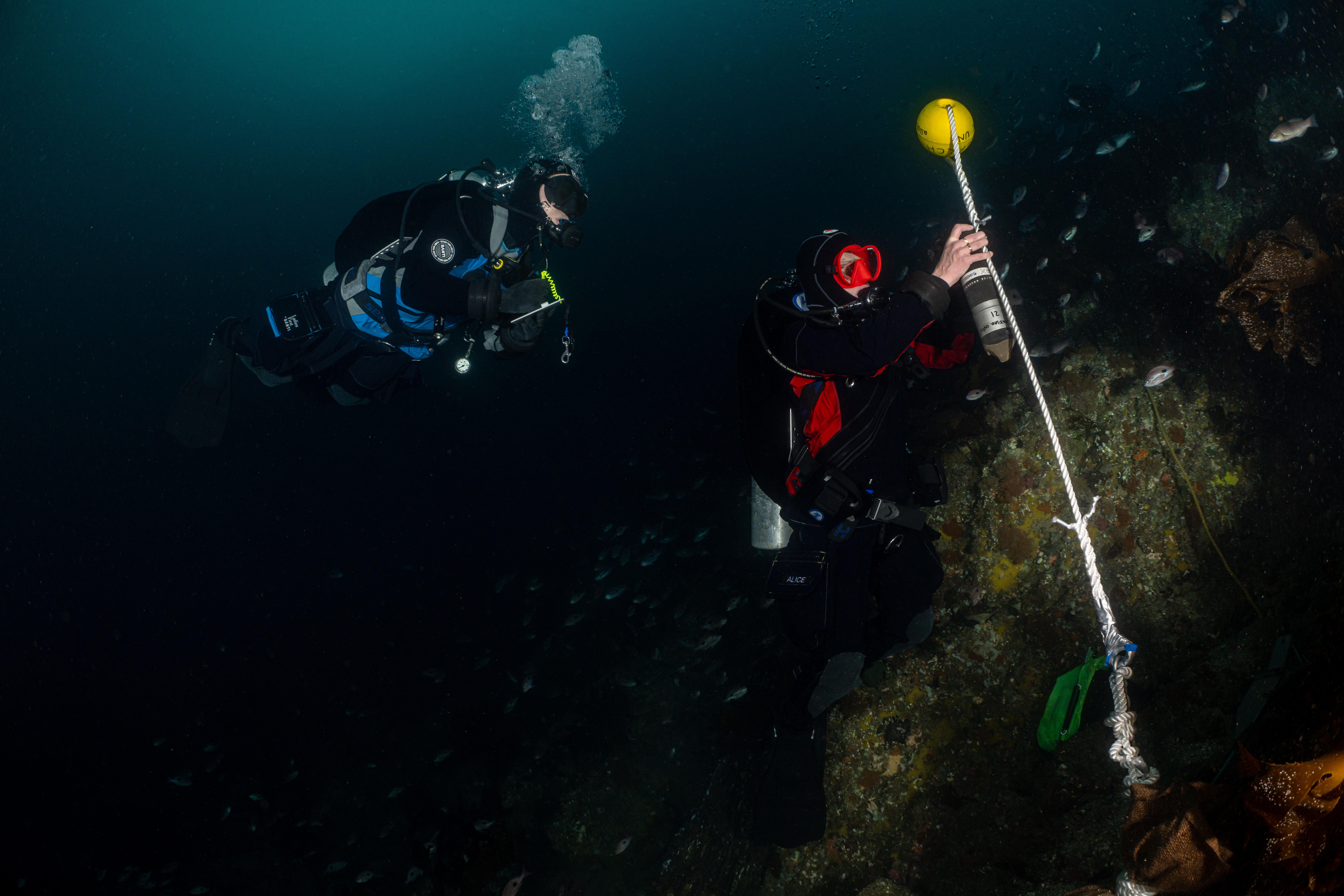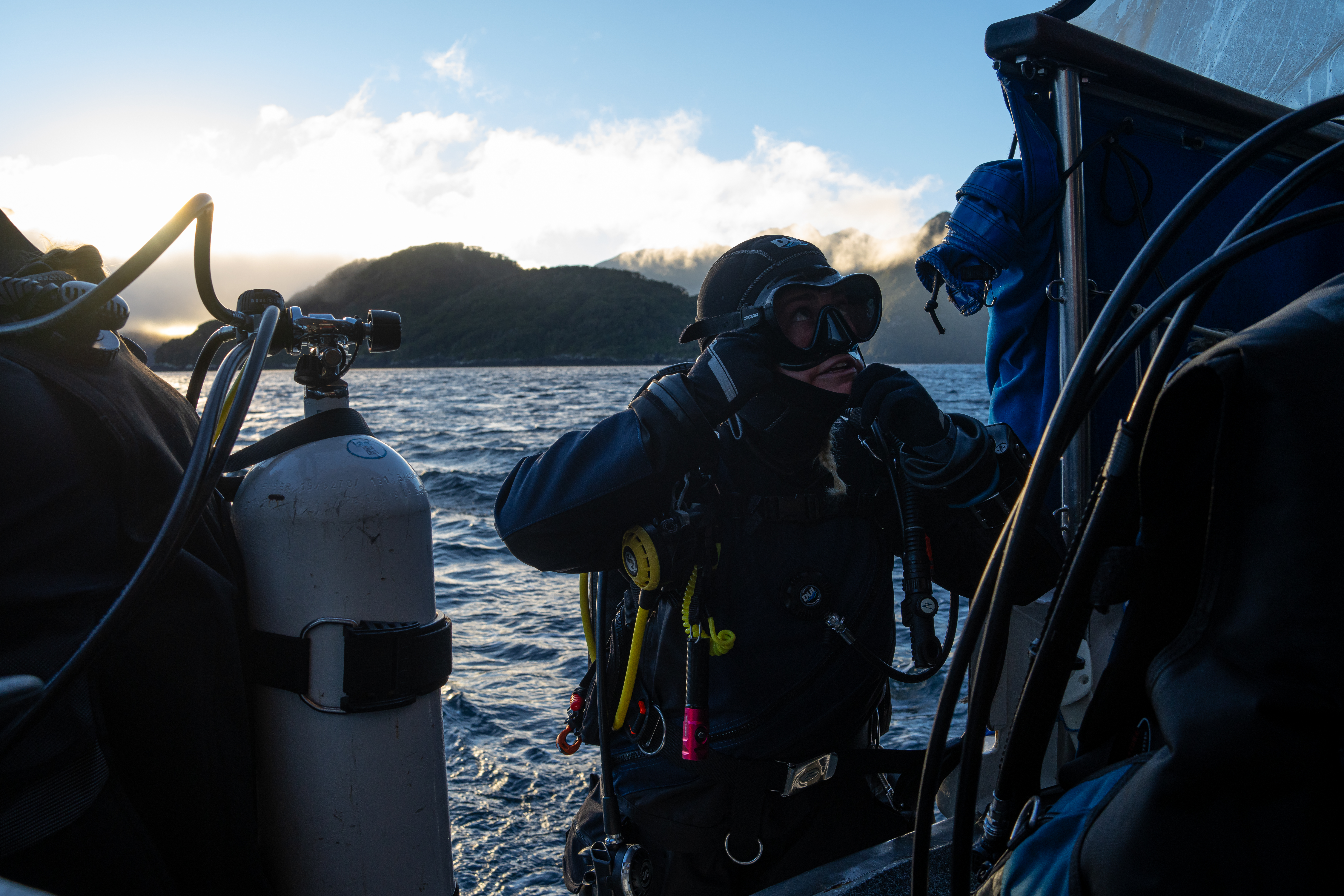Over to the sevengills for data collection!
In May 2024, we made it back to Te Moana o Atawhenua, Fiordland for a dedicated shark expedition. With project co-partners Dr Ross Dwyer from the University of the Sunshine Coast, and Dr Brit Finucci from the National Institute of Water Atmospheric Science (NIWA) and a team of eager researchers and students from Victoria University of Wellington, we were ready for an epic mission in which we hoped to deploy 29 acoustic receivers and tag lots of sharks!
The south gave us the most spectacular welcome, illuminating us with the Aurora Australis on the shores of Lake Te Anau where we spent the night prior to our journey into the Fiords. A positive sign for the week ahead, or visitors from space? We weren’t sure…

The field team are wowed by the Arora Australis on the shore of Lake Te Anau before journeying into the Fiords. Photo © Professor James Bell (taken by unknown passer by)
After a stunning helicopter flight into Breaksea Sound, the MV Pembroke, our home from home came into view, and we settled in for a busy week of activity.
Working in the Fiords requires careful planning and complex logistics – with the southern Fiords accessible only by helicopter, moving the anchors, chain, ropes and buoys that we needed would have been impossible without our wonderful partners from the Southern Fiordland Initiative (Paul and Katherine Mitchell), and the support of Southern Lakes Helicopters.
After retrieving gear carefully stowed for us in the Fiords we set about preparations –all hands-on deck to rig moorings, splice ropes, prepare receivers and manage dive plans and data handling. Rapidly the team connected, and every member did their bit – so efficient were we that as the sun set on day one, we had already deployed our first receiver and caught and tagged our first shark!

VUW PhD students Manon Broadribb and Emma Novak help to prepare acoustic receivers ready for deployment on board the MV Pembroke. Photo © Matteo Collina
Handling these animals was intense and awe-inspiring, we quickly learnt their behaviours, the perfect time of day to catch them, and to keep a look out for their inquisitive buddies when we had one on the hook!
Six full days passed, each filled from dawn til dark with activity. We dived, we ate, we dived some more, rigged moorings, deployed our baited underwater video camera, and then, as dusk approached, we fished for sharks until all were asleep. The weather was wet (Fiordland-y) but morale stayed high, with excitement and joy whenever we caught a shark. We successfully tagged and released 11 sharks, ranging in size from 170 cm to 240 cm, with eight females and three males. It is over to these amazing beasts to collect data for us now!

Dr Alice Rogers attaches acoustic receiver to mooring, with support from PhD student Miriam Pierotti. Photo © Matteo Collina

PhD student Eva Ramey prepares to dive to deploy acoustic receivers. Photo © Matteo Collina
We will return in October to service receivers and pick up data and hopefully tag the remaining 9 sharks for our study – we cannot wait.
